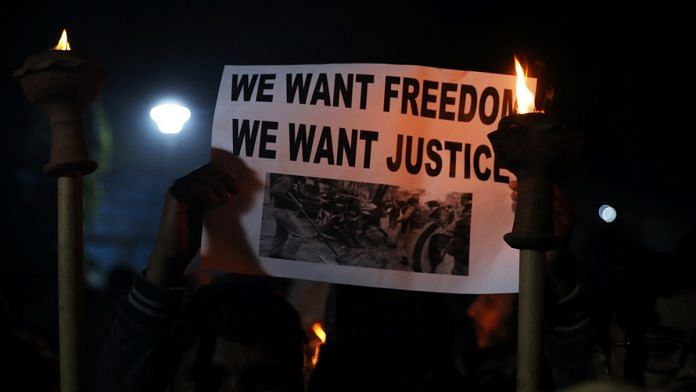If you’re reading this article, you have access to the internet. That isn’t true for everyone in India. In the myriad responses to the recent protests against the National Register of Citizens and the Citizenship Amendment Act, widespread internet shutdowns have been a major feature in the country. The mechanism chokes the flow of information and hinders peaceful organisation. It also departs from the view established by some courts, such as the Kerala High Court in the Faheema Sherin case, that the internet is crucial to the realisation of constitutional guarantees. China’s endorsement of India’s internet shutdowns through its state-run mouthpiece, the People’s Daily, nicely captures the dissonance between such guarantees and executive practices.
A report by the internet advocacy group Access Now has noted that by 2018, India led the world when it came to internet shutdowns, accounting for 67 per cent of all shutdowns worldwide. A large chunk of these shutdowns was preventive in nature. As per another report by the Software Freedom Law Center (SFLC), a similar advocacy group, of the 172 shutdowns recorded between January 2012 and April 2018, 92 were imposed in anticipation of law and order breakdowns, while only 80 were in furtherance of measures to contain instances of actual breakdown.
If we consider this fact alongside another one, that in 2017 preventive shutdowns were nearly thrice reactive shutdowns, we can see a clear tendency to impose shutdowns as a measure of the first instance, rather than as a tool that is used after less restrictive methods have failed. A striking feature of the shutdowns has been the reasons offered in their support and the duration for which they are imposed. For instance, the Rajasthan Police sought permission from the state government to suspend internet services for two consecutive days in July 2018 in order to prevent cheating during the Police Constable recruitment qualifiers. And, of course, in Kashmir, we are seeing the shutdown last for more than 145 days without any end in sight.
Also read: Can Modi govt know who you text? Should FB be liable for your posts? We’ll know in Jan 2020
Wide grounds, minimal safeguards
What does the law say about such shutdowns? The primary provisions here are Section 144 of the Code of Criminal Procedure, 1973, Section 5(2) of the Indian Telegraph Act, 1885, and the Temporary Suspension of Telecom Services (Public Emergency or Public Safety) Rules, 2017 (“Telecom Rules”). As per Section 144, the state can direct any person to take measures pertaining to any “property in his possession or under his management”. As telecom service providers possess and manage the network infrastructure for providing internet access, this power includes shutdowns within its sweep. Such orders must be geared towards preventing “obstruction, annoyance or injury to any person … or danger to human life, health or safety, or a disturbance of the public tranquillity, or a riot or an affray”.
Section 5(2) enters the story for a different reason. Its wide definition of “telegraph” brings the internet within its coverage. Here, power can be exercised to preserve public order and prevent the incitement of an offence. The Telecom Rules were introduced to guide the exercise of this broad-ranging substantive power. They contain a review mechanism for shutdowns authorised by the home secretary – a mechanism absent under Section 144. But on closer analysis, the review is an empty formality as there is no independent judicial member involved in the process, resulting in bureaucratic affirmation of prior executive action in nearly all such cases.
Some preliminary data obtained by the SFLC through the RTI process also reveals that in many cases, the review committee did not even look into the matter. This is even though the Rules insisted such a process be carried out within an outer limit of five days. Finally, there is the additional loophole that many shutdowns are consciously kept operational for less than five days, thereby allowing the executive to avoid sending the matter for review. In short, the grounds for shutdowns are wide and the safeguards are minimal.
Also read: Look at the numbers: Why Digital India can’t afford internet shutdowns with slowing economy
India’s reality
Unlike some provisions in the Information Technology Act, 2000, which focus on the denial of access to specific websites, internet shutdowns are blanket bans. As such, they should be subject to serious scrutiny.
As advocate Suhrith Parthasarathy has powerfully argued, there are major constitutional issues here. Both the freedom of speech and the freedom of assembly stand gravely comprised in the current situation. As things stand, the Indian reality is neither digital nor constitutional.
Madhav Khosla is the author of India’s Founding Moment (Harvard University Press, 2020). Ananth Padmanabhan is Dean, Academic Affairs, Sai University. Views are personal.



